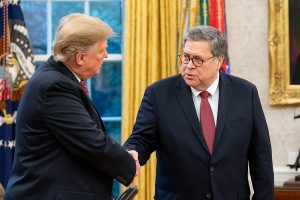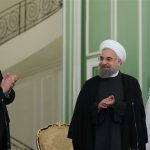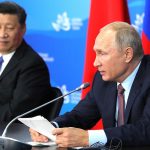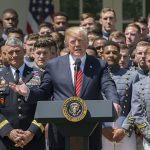Can Washington Move from Pacific Power to Pacific Partner?
Reposted by arrangement with Tom Dispatch
By John Feffer
The United States has long styled itself a Pacific power. It established the model of counterinsurgency in the Philippines in 1899 and defeated the Japanese in World War II. It faced down the Chinese and the North Koreans to keep the Korean peninsula divided in 1950, and it armed the Taiwanese to the teeth. Today, America maintains the most powerful military in the Pacific region, supported by a constellation of military bases, bilateral alliances, and about 100,000 service personnel.
It has, however, reached the high-water mark of its Pacific presence and influence. The geopolitical map is about to be redrawn. Northeast Asia, the area of the world with the greatest concentration of economic and military power, is on the verge of a regional transformation. And the United States, still preoccupied with the Middle East and hobbled by a stalled and stagnating economy, will be the odd man out.
Elections will be part of the change. Next year, South Koreans, Russians, and Taiwanese will all go to the polls. In 2012, the Chinese Communist Party will also ratify its choice of a new leader to take over from President Hu Jintao. He will be the man expected to preside over the country’s rise from the number two spot to the pinnacle of the global economy.
But here’s the real surprise in store for Washington. The catalyst of change may turn out to be the country in the region that has so far changed the least: North Korea. In 2012, the North Korean government has trumpeted to its people a promise to create kangsong taeguk, or an economically prosperous and militarily strong country. Pyongyang now has to deliver somehow on that promise — at a time of food shortages, overall economic stagnation, and political uncertainty. This dream of 2012 is propelling the regime in Pyongyang to shift into diplomatic high gear, and that, in turn, is already creating enormous opportunities for key Pacific powers.
WWashington, which has focused for years on North Korea’s small but developing nuclear arsenal, has barely been paying attention to the larger developments in Asia. Nor will Asia’s looming transformation be a hot topic in our own presidential election next year. We’ll be arguing about jobs, health care, and whether the president is a socialist or his Republican challenger a nutcase. Aside from some ritual China-bashing, Asia will merit little mention.
President Obama, anxious about giving ammunition to his opponent, will be loath to fiddle with Asia policy, which is already on autopilot. So while others scramble to remake East Asia, the United States will be suffering from its own peculiar form of continental drift.
Pyongyang Turns on the Charm
On April 15, 1912, in an obscure spot in the Japanese empire, a baby was born to a Christian family proud of its Korean heritage. The 100th anniversary of the birth of Kim Il Sung, North Korea’s founder and dynastic leader, is coming up next year. Ordinarily, such an event would be of little importance to anyone other than 24 million North Koreans and a scattering of Koreans elsewhere. But this centennial also marks the date by which the North Korean regime has promised to finally turn things around.
Despite its pretensions to self-reliance, Pyongyang has amply proven that it can only get by with a lot of help from its friends. Until recently, however, North Korea was not exactly playing well with others.
It responded in a particularly hardline fashion, for instance, to the more hawkish policies adopted by new South Korean President Lee Myung Bak, when he took office in February 2008. The shooting of a South Korean tourist at the Mount Kumgang resort that July, the sinking of the South Korean naval ship the Cheonan in March 2010 (Pyongyang still claims it was not the culprit), and the shelling of South Korea’s Yeonpyeong Island later that year all accelerated a tailspin in north-south relations. During this period, the North tested a second nuclear device, prompting even its closest ally, China, to react in disgust and support a U.N. declaration of condemnation. Pyongyang also managed to further alienate Washington by revealing in 2010 that it was indeed pursuing a program to produce highly enriched, weapons-grade uranium, something it had long denied.
These actions had painful economic consequences. South Korea cancelled almost all forms of cooperation. The North’s second nuclear test scotched any incipient economic rapprochement with the United States. (The Bush administration had removed North Korea from its terrorism list, and there had been hints that other longstanding sanctions might sooner or later be dropped as part of a warming in relations.)
Only the North’s relationship with China was unaffected, largely because Beijing is gobbling up significant quantities of valuable minerals and securing access to ports in exchange for just enough food and energy to keep the country on life support and the regime afloat. Between 2006 and 2009, an already anemic North Korean economy contracted, and chronic food shortages again became acute.
To these economic travails must be added political ones. The country’s leadership is long past retirement, with 70-year-old leader Kim Jong Il younger than most of the rest of the ruling elite. He has designated his youngest son, Kim Jeong Eun, as his successor, but the only thing that this mystery boy seems to have going for him is his resemblance to his grandfather, Kim Il Sung.
Still, North Korea seems no closer to full-scale collapse today than during previous crises — like the devastating famine of the mid-1990s. A thoroughly repressive state and zero civil society seem to insure that no color revolution or “Pyongyang Spring” is in the offing. Waiting for the North Korean regime to go gently into the night is like waiting for Godot.
But that doesn’t mean change isn’t in the air. To jumpstart its bedraggled economy and provide a political boost for the next leader in the year of kangsong taeguk, North Korea is suddenly in a let’s-make-a-deal mode.
 Kim Jong Il’s recent visit to Siberia to meet Russian President Dmitri Medvedev, for instance, raised a few knowledgeable eyebrows. Conferring at a Russian military base near Lake Baikal, for the first time in a long while the North Korean leader even raised the possibility of a moratorium on nuclear weapons production and testing. More substantially, he concluded a preliminary agreement on a natural gas pipeline that could in itself begin to transform the politics of the region. It would transfer gas from the energy-rich Russian Far East through North Korea to economically booming but energy-hungry South Korea. The deal could net Pyongyang as much as $100 million a year.
Kim Jong Il’s recent visit to Siberia to meet Russian President Dmitri Medvedev, for instance, raised a few knowledgeable eyebrows. Conferring at a Russian military base near Lake Baikal, for the first time in a long while the North Korean leader even raised the possibility of a moratorium on nuclear weapons production and testing. More substantially, he concluded a preliminary agreement on a natural gas pipeline that could in itself begin to transform the politics of the region. It would transfer gas from the energy-rich Russian Far East through North Korea to economically booming but energy-hungry South Korea. The deal could net Pyongyang as much as $100 million a year.
The North’s new charm offensive wouldn’t have a hope in hell of succeeding if a similar change of heart weren’t also underway in the South.
The Bulldozer’s Miscalculation
On taking office, the conservative South Korean president Lee Myung Bak, known as “the Bulldozer” when he headed up Hyundai’s engineering division, promised to put Korean relations on a new footing. Ten years of “engagement policy” with the North had, according to Lee, produced an asymmetrical relationship. The South, he insisted, was providing all the cash, and the North was doing very little in exchange. Lee promised a relationship based only on quid pro quos.
What he got instead was tit for tat: harsher rhetoric and military action. Ultimately, although the North made no friends below the 38th parallel that way, the new era of hostility didn’t help the Lee administration either. South Koreans generally watched in horror as a relatively peaceful relationship veered dangerously close to military conflict.
Lee’s ruling party suffered a loss in last April’s by-elections, and in August, he replaced his hardline “unification” minister with a more conciliatory fellow. Still insisting on an apology for the Cheonan sinking and the Yeonpyeong shelling, the ruling party is nevertheless looking for ways to restore commercial ties and again provide humanitarian assistance to the North. Since the summer, representatives from North and South have met twice to discuss Pyongyang’s nuclear program. Although the two sides haven’t made substantial progress, the stage is set for the resumption of the Six Party Talks between the two Koreas, Russia, Japan, China, and the United States that broke off in 2007.
Even if the opposition party doesn’t sweep the conservatives out of power in the 2012 elections, South Korea will likely abandon Lee’s tough-guy approach. In September, his likely successor as the ruling party candidate in 2012, Park Geun-Hye, openly criticized Lee’s approach in an article in Foreign Affairs that called instead for “trustpolitik.”
One project Park singled out for mention is an inter-Korean railroad line that would “perhaps transform the Korean Peninsula into a conduit for regional trade.” That’s an understatement. Restoring the line and hooking it up to Russia’s Trans-Siberian Railroad would connect the Korean peninsula to Europe, reduce the shipment time of goods from one end of Eurasia to the other by about two weeks, and save South Korea up to $34 to $50 per ton in shipping costs. Meanwhile, the natural gas pipeline, which South Korea approved at the end of September, could reduce its gas costs by as much as 30%. For the world’s second largest natural gas importer, this would be a major savings.
Serious economic steps toward Korean reunification are not just a dream, in other words, but good business, too. Even in the worst moments of the recent period of disengagement, it’s notable that the two countries managed to preserve the Kaesong industrial complex located just north of the Demilitarized Zone. Run by South Korean managers and employing more than 45,000 North Koreans, the business zone is a boon to both sides. It helps South Korean enterprises facing competition from China, even as it provides hard currency and well-paying jobs to the North. The railroad and the pipeline would offer similar mutual benefits.
According to conventional wisdom, North Korea has a single bargaining chip, its small nuclear arsenal, which it will never give up. But a real estate agent would look at the situation differently. What North Korea really has is “location, location, location,” and it finally seems ready to cash in on its critical position at the heart of the world’s most vital economic region.
The train line would bind the world’s two biggest economic regions into a huge Eurasian market. And the pipeline, coupled with green energy projects in China, South Korea, and Japan, might begin to wean East Asia from its dependency on Middle Eastern oil and thus on the U.S. military to secure access and protect shipping routes.
Thought of another way, these projects and others like them lurking in the Eurasian future are significant not just for what they connect, but what they leave out: the United States.
Out in the Cold
The Bush administration anticipated Lee Myung Bak’s approach to North Korea by chucking the carrot and waving the stick. By 2006, however, Washington had made a U-turn and was beginning to engage Pyongyang seriously. The Obama administration took another tack, eventually adopting a policy of “strategic patience,” a euphemism for ignoring North Korea and hoping it wouldn’t throw a tantrum.
It hasn’t worked. North Korea has plunged full speed ahead with its nuclear program. The U.S./NATO air campaign against Libya’s Muammar Gaddafi, who had given up his nuclear program to secure better relations with the West, only reinforced Pyongyang’s belief that nukes are the ultimate guarantor of its security. The Obama administration continues to insist that the regime show its seriousness about denuclearization as a precondition for resuming talks. Even though Washington recently sent a small amount of flood relief, it refuses to offer any serious food assistance. Indeed, in June, the House of Representatives passed an amendment to the agriculture bill that prohibited all food aid to the country, regardless of need.
Though the administration will likely send envoy Stephen Bosworth to North Korea later this year, no one expects major changes in policy or relations to result. With a presidential election year already looming, the Obama administration isn’t likely to spend political capital on North Korea — not when Republicans would undoubtedly label any new moves as “appeasement” of a “terrorist state.”
Obama came into office with a desire to shift U.S. policy away from its Middle Eastern focus and reassert America’s importance as a Pacific power, particularly in light of China’s growing regional influence. But the president has invested more in drones than in diplomacy, sustaining the war on terror at the expense of the sort of bolder engagement of adversaries that Obama hinted at as a candidate. In the meantime, the administration is prepared to just wait it out until the next elections are history — and by then, it might already be too late to catch up with regional developments.
After all, Washington has watched China become the top trading partner of nearly every Asian country. Similarly, the economic links between China and Taiwan have deepened considerably, a reality to which even that island’s opposition party must bow. The Obama administration’s recent decision not to upset Beijing too much by selling advanced F-16 fighter jets to Taiwan, opting instead for a mere upgrade of the F-16s it bought in the 1990s, is a clear sign of relative U.S. decline in the region, suggests big-picture analyst Robert Kaplan.
Then there’s the sheer cost of the U.S. military presence in the Pacific, which looks like a juicy target to budget cutters in Washington. Key members of Congress like Senators John McCain and Carl Levin have already signaled their anxiety about the high price tag of a planned “strategic realignment” in Asia that involves, among other things, an expansion of the U.S. military base in Guam and an upgrading of facilities in Okinawa. In response to a question about potential military cuts, new Deputy Secretary of Defense Ashton Carter has confirmed that reducing U.S. troops and bases overseas is “on the table.”
The future of East Asia is hardly a given, nor is an economic boom and regional integration the only possible scenario. Virtually every country in the region has hiked its military spending. Tension points abound, particularly in potentially energy-rich waters that various countries claim as their own. China’s staggering economic growth is not likely to be sustainable in the long term. And North Korea could ultimately decide to make do as an economically destitute but adequately strong military power.
Still, the trend lines for 2012 and after point to greater engagement on the Korean peninsula, across the Taiwan Strait, and between Asia and Europe. Right now, the United States, for all of its military clout, is not really part of this emerging picture. Isn’t it time for America to gracefully acknowledge that its years as the Pacific superpower are over and think creatively about how to be a pacific partner instead?
John Feffer is the co-director of Foreign Policy in Focus at the Institute for Policy Studies, writes its regular World Beat column, and will be publishing a book on Islamophobia with City Lights Press in 2012. His past essays, including those for TomDispatch.com, can be read at his website. To listen to Timothy MacBain’s latest Tomcast audio interview in which Feffer discusses the 2012 election season in Asia click here, or download it to your iPod here.
Copyright 2011 John Feffer





Internationalize our Navy. It will boost our credibility, help us man and fund tghe ships and put a true international coalition in the So. China sea. This would throw a bone to the defense contractors while allowing us to scale back our own role.